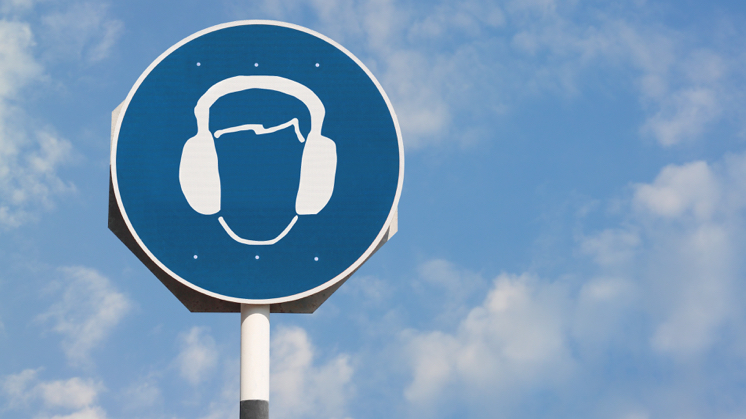Noise pollution
Noise pollution: how to reduce the impact of an invisible threat?
Atmospheric pollution is not the only type of contamination that is harming living beings on the planet. According to the World Health Organization (WHO), it is one of the most dangerous environmental threats to health. And according to the European Environment Agency (EEA), noise is responsible for 12,000 premature deaths and 48,000 new cases of ischaemic heart disease every year.

Drivers honking the horn, groups of workers drilling the road surface, aircraft flying over us in the sky... Noise, noise and more noise. Cities have become the epicentre of a type of pollution, acoustics, which, although its invisibility and the fact that coronavirus crisis reduced it until almost yearn it, is severely damaging to human beings. So much so that the European Environment Agency estimates that noise is responsible for 12,000 premature deaths and 48,000 new cases of ischaemic heart disease.
Not only does it hurt humans, it is bad for animals, too. According to the National Park Service (NPS) in the United States, noise pollution has an enormous environmental impact and does serious damage to wildlife. Experts say noise pollution can interfere with breeding cycles and rearing and is even hastening the extinction of some species.
What is noise pollution?
Not all sound is considered noise pollution. The World Health Organization (WHO) defines noise above 65 decibels (dB) as noise pollution. To be precise, noise becomes harmful when it exceeds 75 decibels (dB) and is painful above 120 dB. As a consequence, it is recommended noise levels be kept below 65 dB during the day and indicates that restful sleep is impossible with nighttime ambient noise levels in excess of 30 dB.
Causes of noise pollution
There are many sources of noise pollution, but here are some of the main ones:
 Traffic noise
Traffic noise
Traffic noise accounts for most polluting noise in cities. For example, a car horn produces 90 dB and a bus produces 100 dB.
 Air traffic noise
Air traffic noise
There are fewer aircraft flying over cities than there are cars on the roads, but the impact is greater: a single aircraft produces 130 dB.
 Construction sites
Construction sites
Building and car park construction and road and pavement resurfacing works are very noisy. For example, a pneumatic drill produces 110 dB.
 Catering and night life
Catering and night life
Bars, restaurants and terraces that spill outside when the weather is good can produce more than 100 dB. This includes noise from pubs and clubs.
 Animals
Animals
Noise made by animals can go unnoticed, but a howling or barking dog, for example, can produce around 60-80 dB.

Effects of noise pollution
As well as damaging our hearing by causing — tinnitus or deafness —, constant loud noise can damage human health in many ways, particularly in the very young and the very old. Here are some of the main ones:
 Physical
Physical
Respiratory agitation, racing pulse, high blood pressure, headaches and, in case of extremely loud, constant noise, gastritis, colitis and even heart attacks.
 Psychological
Psychological
Noise can cause attacks of stress, fatigue, depression, anxiety and hysteria in both humans and animals.
 Sleep and behavioural disorders
Sleep and behavioural disorders
Noise above 45 dB stops you from falling asleep or sleeping properly. Remember that according to the World Health Organization it should be no more than 30 dB. Loud noise can have latent effects on our behaviour, causing aggressive behaviour and irritability.
 Memory and concentration
Memory and concentration
Noise may affect people's ability to focus, which can lead to low performance over time. It is also bad for the memory, making it hard to study.
Interestingly, our ears need more than 16 hours' rest to make up for two hours of exposure to 100 dB.
Solutions to reduce noise pollution
International bodies like the WHO agree that awareness of noise pollution is essential to beat this invisible enemy. For example: avoid very noisy leisure activities, opt for alternatives means of transport such as bicycles or electric vehicles over taking the car, do your housework at recommended times, insulate homes with noise-absorbing materials, etc. Educating the younger generation is also an essential aspect of environmental education.
Governments can also take measures to ensure correct noise management and reduce noise pollution. For example: protecting certain areas — parts of the countryside, areas of natural interest, city parks, etc. — from noise, establishing regulations that include preventive and corrective measures — mandatory separation between residential zones and sources of noise like airports, fines for exceeding noise limits, etc. —, installing noise insulation in new buildings, creating pedestrian areas where traffic is only allowed to enter to offload goods at certain times, replacing traditional asphalt with more efficient options that can reduce traffic noise by up to 3 dB, among others.
In recent years, the European Union has been promoting the use of new barriers that allow changes in sound waves, mainly for motorways and other forms of transport such as trains. Tests have been carried out in the Benelux and it seems that this is going to be extended to northern Europe. At the same time, work is being done on new, spongier and quieter asphalts, which are also better for the environment.






